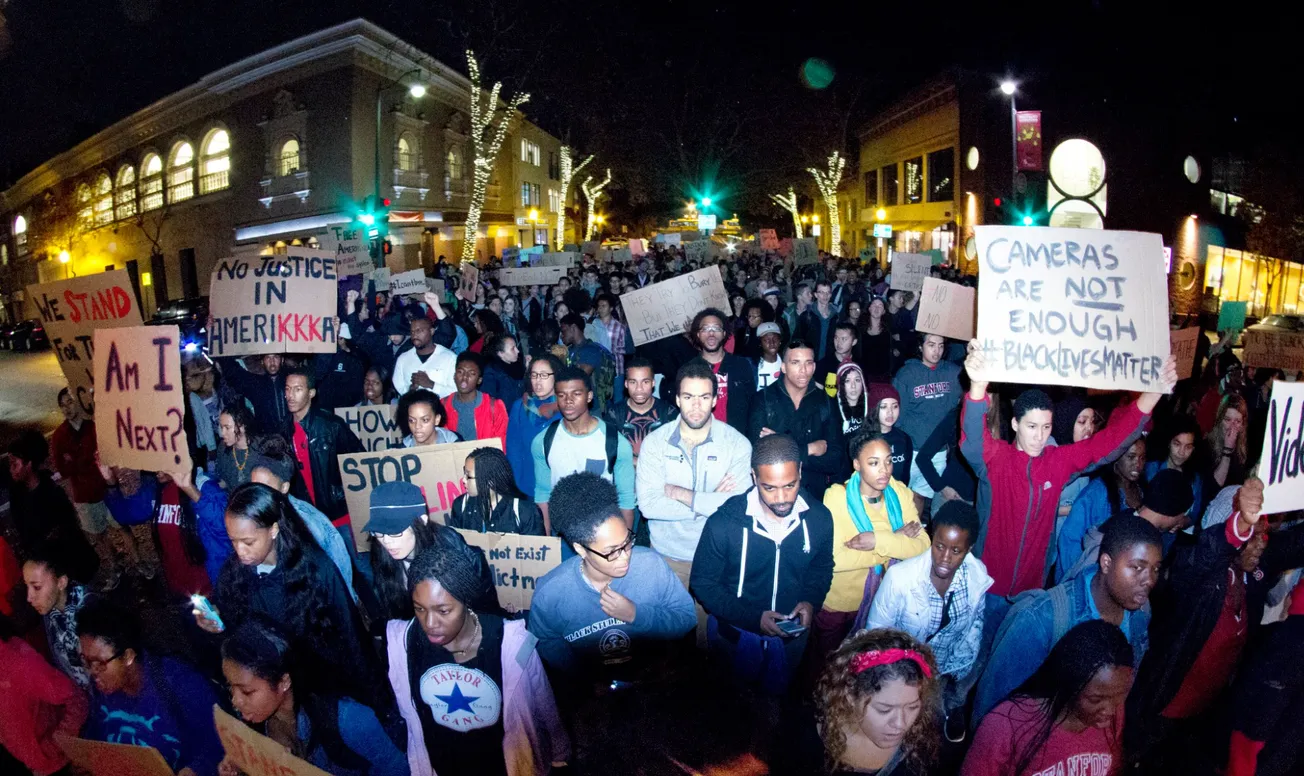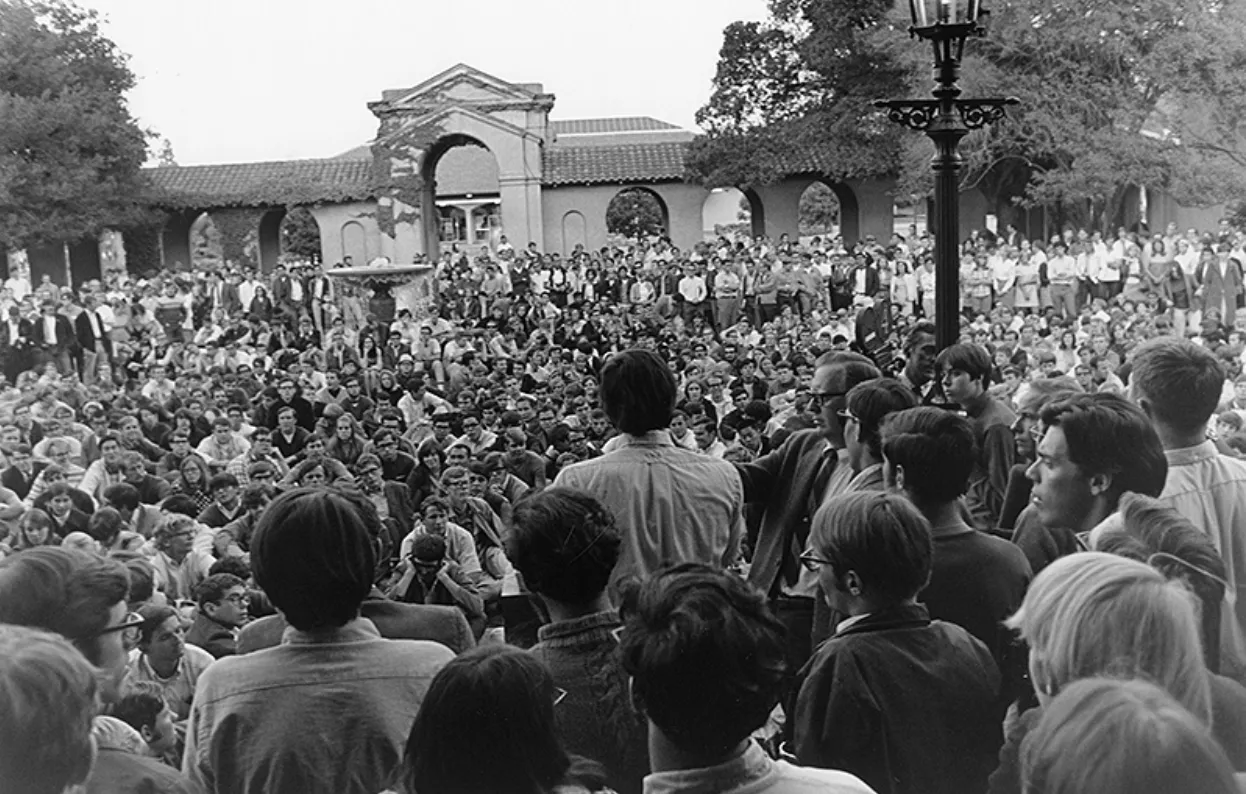Table of Contents
Protesting at Stanford is a common occurrence, but is it the best use of the Stanford name and the privileges associated with it?
Social justice initiatives have dominated Stanford’s campus this academic year. Most notably, students have protested on campus, on highways, and on bridges to demand social change. Although the protesters were well-intentioned and courageous, Stanford students should pursue more effective alternatives when pushing for change. Stanford University provides students with access to a wealth of resources, influential networks, and talented peers. Instead of simply ‘spreading awareness’ and asking a third party to make a difference, it is imperative that students pursuing change engage in all that Stanford provides in order to be the ones to make the necessary impact.
The protesters from campus were clearly passionate, engaged, and committed to impacting important issues. Protests have an important role in American society and around the world. The American Civil Rights movement benefitted from the March on Washington and the recent protests in Hong Kong and Ukraine have drawn considerable attention to issues in the two countries. Undoubtedly, there are benefits from protesting as a Stanford student. Protesters increase the prominence of the issues they are protesting on campus, they possibly draw national attention because of the Stanford name, and like any other protest, they make a statement to the greater community. However, the effectiveness of a Stanford protest about nebulous national and international topics such as privilege and institutional injustice is questionable.
For many issues, the effectiveness of Stanford protests is questionable because onlookers rightly sense some hypocrisy when the protest is regarding issues of privilege. The paradox of Stanford students protesting privilege raises three significant issues. First, when openly criticizing privilege, students have to at least acknowledge their own current position of privilege: hard work and good fortune resulted in a coveted position at Stanford, a prestigious university. Second, the opportunity cost of protesting as a Stanford student is relatively low. If the option is between protesting and attending class, skipping class for a day has few, if any, negative consequences. Stanford students who protest risk missing a lecture, lowering their grade, or at worst, receiving a citation. This is quite unlike the Freedom Riders or the protesters in Ukraine who risk their own lives, the lives of their families and friends, and their acceptance into their society in order to stand up to their government. When the stakes are higher, the power of protest is increased. When the stakes are lower, it can seem as if there is a lot of emotional rhetoric without a significant investment behind engagement. Finally, Stanford is only able to matriculate around 1,700 students every year – out of over 40,000 applicants. Around the world, high school students strive to attend Stanford University. At an even more fundamental level, there are numerous individuals who would love to take advantage of a college education. To honor those around the world who cannot but want to be in the position of a Stanford student, students should make most of their college education, and protests are not the best way to do so.
Positive discussion is imperative to creating sustainable and meaningful change, and protests sometimes hinder progress towards building this discussion. Protests on campus have drawn attention to issues,yet they create a culture where many protesters are unable to empathize with anyone who is not on the side of the protest. Protests – such as the sexual assault rally and Black Lives Matters marches – have created emotionally charged conversations and divisions between the “caring” and the “heartless.” Divisive conversations are toxic, as noted by President Hennessy in his statement to the faculty senate.
As a Stanford student eager to make a change, there are a variety of options worth pursuing while in school:
- Invest in learning. This university offers diverse perspectives, new topics, and unique skills only acquirable at Stanford. Students can take classes with one of our 21 nobel laureates, or they can maximize on the $5 million spent on undergraduate research. After graduation, students can obtain a job that aligns with their desire to make a difference or get a job that pays enough to make a difference. According to Pew Research Center, having a bachelor’s degree translates into earning approximately $15,000 more per year than someone without one, and most Stanford alumni with five years of work experience are earning six figures. Financial capital would allow Stanford graduates to fund causes they consider to be important. Whether through finance or time, Stanford graduates can make a difference.
- Engage with alumni. The alumni network is extremely well connected, intelligent, and influential. Learning from Stanford graduates is a fantastic way to gain insight into sectors of interest and receive advice on how to navigate the playing field. Stanford alumni are movers and shakers in private, public, and non-profit sectors. They can help current students understand the problems they desire want to solve and are potential partners in the future. Although young students bring vigor and zeal to the table, this can sometimes mask insights and realities about a situation that those in the workforce can share.
- Make friends with people who care about similar issues. Stanford students become Stanford alumni, which statistically shows that they will, at the very least, do well financially. In order to make a change in large, structural issues, individuals must develop teams. While at Stanford, it is important that students take the time to develop a team of individuals that can combat the multifaceted problem they want to solve. Instead of standing on the street for a day, students should fine tune their argument in order strategically communicate their message for the rest of their lives.
- Challenge ideology by connecting with students who fall on the opposite side of the issue. The best argument is one that has been defended repeatedly. There are students at Stanford who can provide a check to strong ideas and really question both moral validity and methods of implementation. Additionally, students that oppose the ideas provide some of the best opportunities to develop activists: change their mind. Anyone tackling an enormous problem entrenched in society will be fighting an uphill battle. To win, minds must be changed. Students can practice framing their argument in compelling ways. If successful, they’ll convince one more future influencer to be on their team, and that has a domino effect. While protests can make people aware of an issue, the people that support an idea because they hear of a protest are not fully committed. People who seek research, dialogue, and nuances that will invest the time and effort into the cause.
**** ****
There are many ways to make a change in the world. At Stanford, students have the unique opportunity to gain significant influence at a young age, and to be connected to a network of influencers. Protesting is an important mechanism that allows students to exercise their free speech rights, but it is not necessarily the best way to make the changes you want to see.








